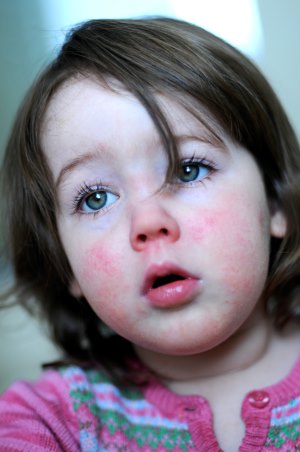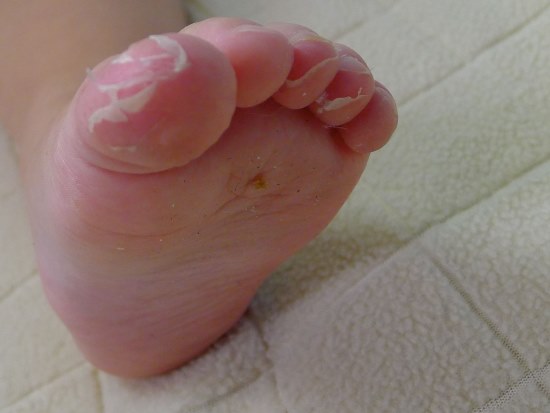About scarlet fever
Scarlet fever is a complication that can happen when a child has a throat or skin infection caused by the bacteria Streptococcus pyogenes (group A strep). This bacteria can release toxins that spread through the child’s body and cause scarlet fever symptoms.
Group A strep bacteria can spread if you touch or breathe in droplets from an infected person’s cough or sneeze. It can also spread if you touch the sores of someone with a skin infection.
Scarlet fever symptoms
Children with scarlet fever often have:
- a sore throat
- tender and swollen lymph nodes in their necks
- fever
- vomiting.
A bumpy rash can appear at the time of infection or 1-2 weeks later. The rash feels like sandpaper to touch. On light skin, the rash will look red. On dark skin, the rash might look purple or you might not see a change in colour. The bumps and sandpaper texture will still be obvious.
The rash starts blotchy and changes over time to look more like sunburn. There’s usually a clear area around the mouth. Parts of the rash around the underarms, elbows and groin might be more obvious than the rest of the rash.
After the infection has gone away, children’s skin might peel, usually on the tips of their fingers and toes.
Children’s tongues might also turn bright red. This is sometimes called a ‘strawberry tongue’.

Image: scarlet fever rash

Image: peeling after scarlet fever (source: DermNet).
Complications of scarlet fever
Repeated group A strep infections can affect the heart and kidneys.
But it’s very rare for children to have complications of scarlet fever.
Medical help: when to get it for children with scarlet fever
You should take your child to the GP if your child shows symptoms of scarlet fever.
You know your child best. If your child seems unwell, seek medical attention.
Tests for scarlet fever
Your doctor might do a throat swab to confirm that your child has scarlet fever.
Scarlet fever treatment
Scarlet fever looks dramatic, but it’s usually easily treated with antibiotics.
With treatment, your child will usually start to get better within 48 hours.
Your GP might want to check your child’s kidneys and heart after the infection has gone to make sure there have been no complications.
If your child has scarlet fever, they’re infectious for only 1-2 days if they get the right treatment. But they might be infectious for 10-21 days if they don’t get treatment.
Prevention of scarlet fever
There’s no immunisation for scarlet fever.
To prevent group A strep bacteria from spreading, you, your child and other family members should wash hands regularly with warm, soapy water. You should all try to keep your hands away from eyes, nose and mouth too.